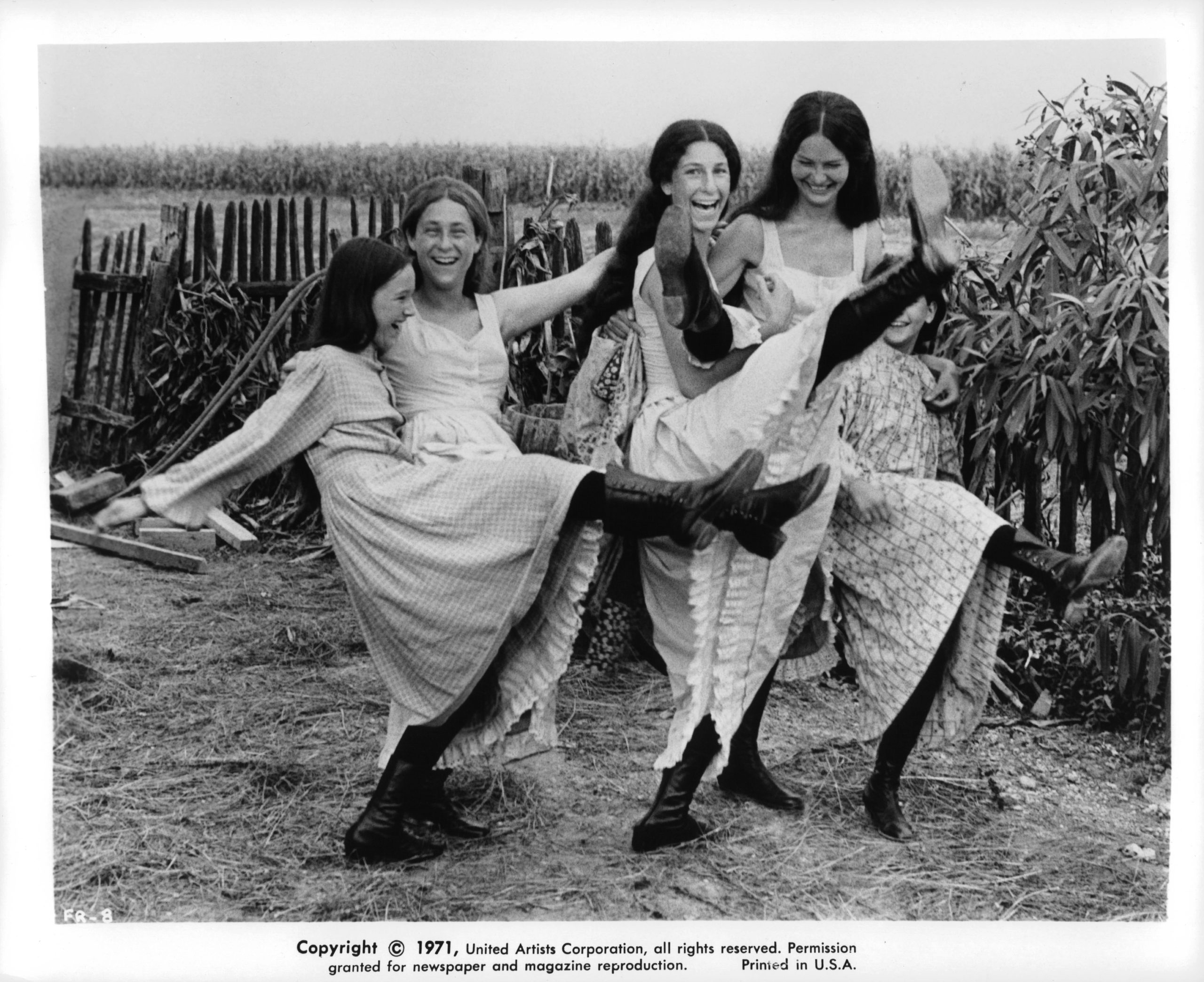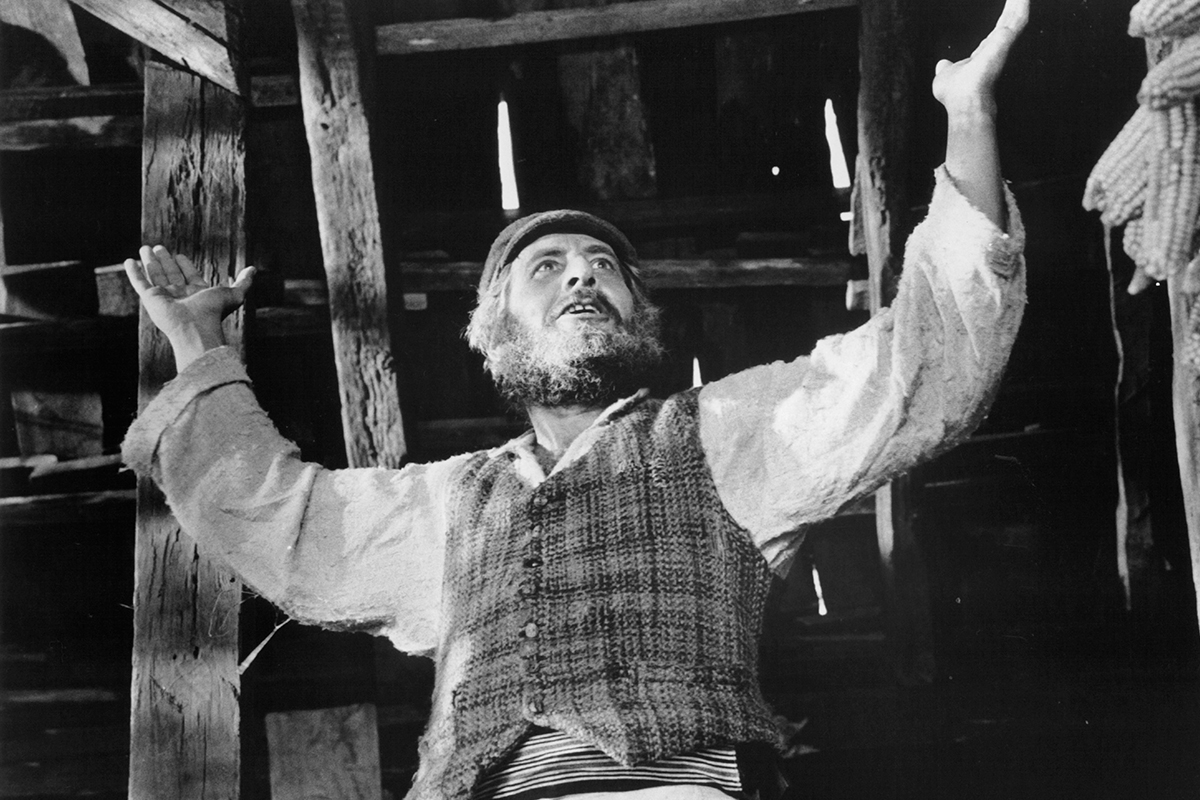At Jewish day school, I had a secret.
I hid it the best I could. I would nervously laugh when a Hebrew teacher mentioned “Hodel” in class, pretending to understand the reference. When a rendition of “Tradition” arose backstage during camp plays, I would immediately change the tune to something from Wicked or Rent. It was as scandalous as a cinnamon bun on a seder plate. After years of Jewish education, summer camp, and after-school musical theater lessons, I had never seen a production of Fiddler on the Roof.
I never watched the 1971 film version when I was young. My parents didn’t grow up with the story, so it was never playing in the living room at home. Then, as I matured, it snowballed to the point that I refused to tune in to any incarnation of the tale. Certainly, I had already missed some imaginary deadline for this story to be impactful. Besides, I was the type of kid to bring a tub of quinoa for school lunch instead of a bagel with cream cheese; Fiddler was far too mainstream for my precocious tastes. I kept this lack of knowledge a secret from my Jewish friends, some of whom had even starred in staged versions. After all, how could I admit that I had skipped the quintessential Jewish family movie? The filmic equivalent of matzah ball soup?
But now here I am, home from college unexpectedly thanks to a terrible pandemic and faced with newfound free time I need to fill. And so, I decided to also finally fill this cultural gap. With a pen, a notebook, and a tub of hummus by my side, I rented the 1971 Norman Jewison film version of Fiddler on the Roof on a recent Thursday afternoon.
Shalom Aleichem wrote the original “Tevye the Milkman” stories that inspired Fiddler in the late 19th century, living in Ukraine. Like many of Aleichem’s works, Fiddler takes place in an imaginary shtetl, a fictionalized version of real Eastern European enclaves that were predominantly Jewish. Aleichem wrote in the vernacular language of Yiddish, weaving irony and idioms into his narration to spotlight the foibles of working-class life. The major Yiddish authors of the time were often self-conscious, discussing the tug-of-war between tradition and encroaching forces of modernity.
All those themes surfaced as I watched the movie, elevated by fantastic comedy and acting. Topel’s version of Tevye the Milkman’s fantasy about wealth, “If I Were a Rich Man,” was every bit as uproarious as my bunkmate’s parody at summer camp. Later, I laughed out loud when the entire village gathered around Motel and Tzeitel’s home, as if gushing over a newborn baby. Instead, the new arrival is a sewing machine: a shiny, metallic harbinger that life in the shtetl will get easier, but also a sign that a beloved way of life was withering away.
Of course, Jewison’s version of Fiddler isn’t completely unproblematic. “Matchmaker,” the catchy ditty about arranged marriages, includes a lyric about a physical abuse that most overlook. More, the characters’ poverty is presented with a veneer of folksiness, and the pogrom violence mostly occurs off-screen. I wondered how a non-Jewish audience member would perceive the eccentric characters of Anatevka. Would they be able to understand the layered irony and self-scrutiny in Joseph Stein’s script, or will they accept the shtetl at face-value: a self-sufficient paradise of kvetching but cheerful Jews?

Like any good Jewish fable, many themes from Fiddler on the Roof also resonated with my life today. I was astonished at how many times I paused the movie to note that a similar situation had once occurred in my own life. At the end of the first act, I watched a magnificent wedding that transitioned into a hora that seemed to include every Jew in Eastern Europe. Months ago, I danced at a family member’s wedding with my friends. Today, I tear up when I scroll through photos from the night on my phone. A wedding now seems like a relic from a distant era. Aleichem would have a proverb to describe that sense of nostalgia and loss: “He who dances at every wedding must cry at every funeral.” In the world of Fiddler, there is an idiom to make sense of everything.
Finally, I arrived at the film’s closing scene. Tevye, pushing his plow along a snowy road outside Anatevka, looks back and nods at the fiddler playing in the distance. This moment of eye contact reminds him that his Judaism will pursue his family as they immigrate to America. It’s a reminder that nothing — not pogroms, not assimilation, not the horrors of European fascism to come later in the century — can silence the bittersweet, stringed music of his people.
More than just escapism, watching Fiddler for the first time as a college student reminded me that there is no single, inflexible order when it comes to engaging with Jewish culture. My Jewish identity today stems from myself and my own daily choices, not a planned route of day schools and Torah classes my parents mapped out when I was a kid.
I feel closer to my roots in small Shabbat dinners with my friends today than I ever did in the Orthodox synagogue of my childhood. I enjoy my Jewish Studies electives in college — where I can marry my love of Judaism with my passions for film or social justice — much more than compulsory Torah analysis in Hebrew school. And watching Broad City before encountering Fiddler on the Roof did not cheapen the experience of this seminal tale, either. Instead, my vantage point as a (slightly…) more educated young adult allowed me to locate the themes of insularity and change within my own life.
Some classics can affect us no matter what age we first encounter them. Fiddler on the Roof provided me with comfort and connection, and it challenged my certainty that my cultural tastes had already solidified. I argue that it’s never too late to explore a new aspect of your Jewish identity, be it an unfamiliar custom or a film you’ve put off watching for years. Like picking up the fiddle, it doesn’t matter when you begin to connect with your Judaism; you just need to start playing.
Header image: Topol raising his hands in the air in a scene from the film ‘Fiddler On The Roof’, 1971. Photo by United Artists/Getty Images.



